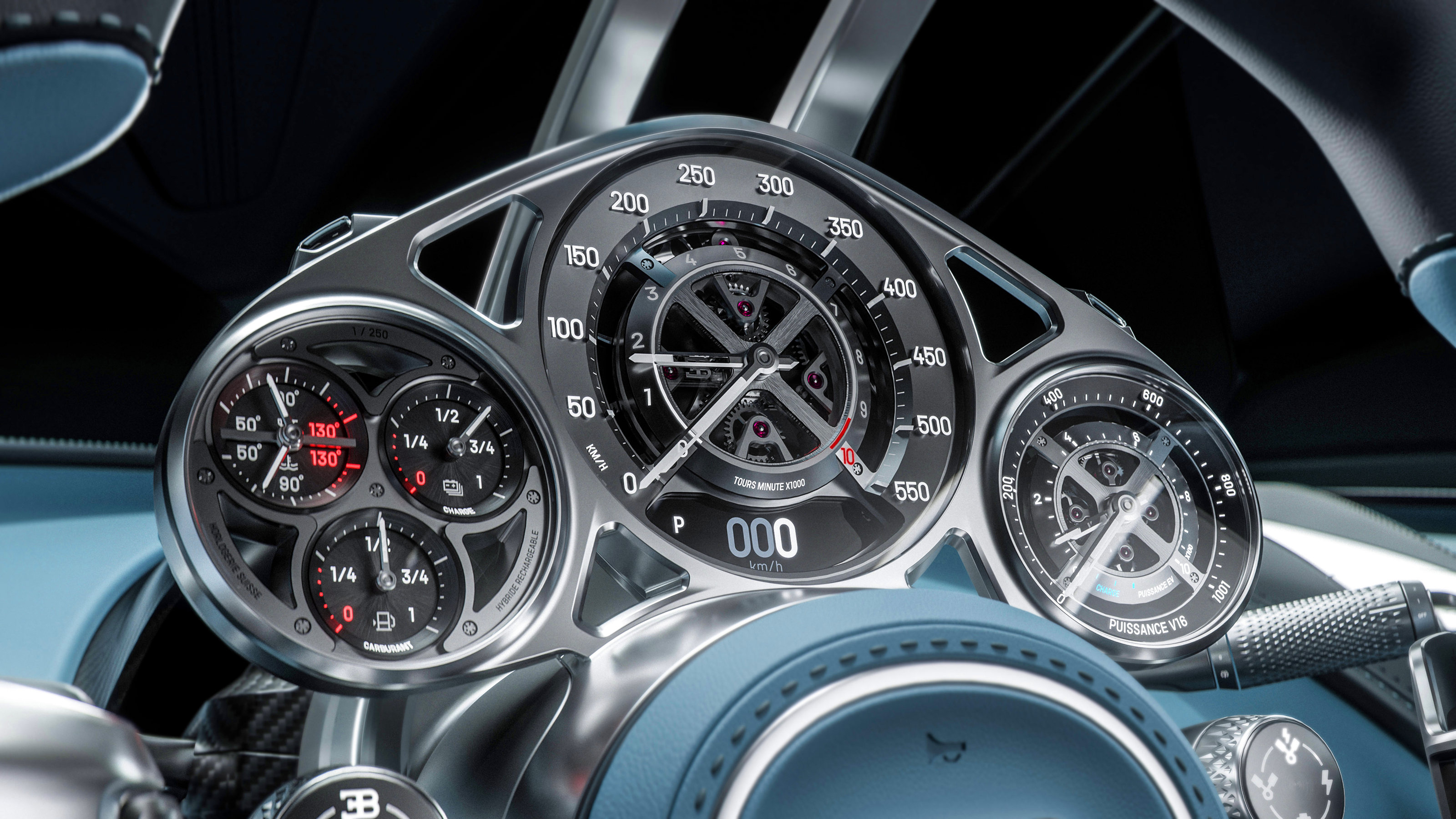
The designers behind the new £3.2m 1800hp Bugatti Tourbillon know that these are machines that will endure forever. It’s a point that clearly focuses their minds. ‘Once built and hopefully never crashed, these things don’t disappear,’ Bugatti design director Frank Heyl explained to Wallpaper*. ‘They endure the decades within car collections. So what does that mean for design? It means it had bloody better be timeless and not littered with today’s technology.’
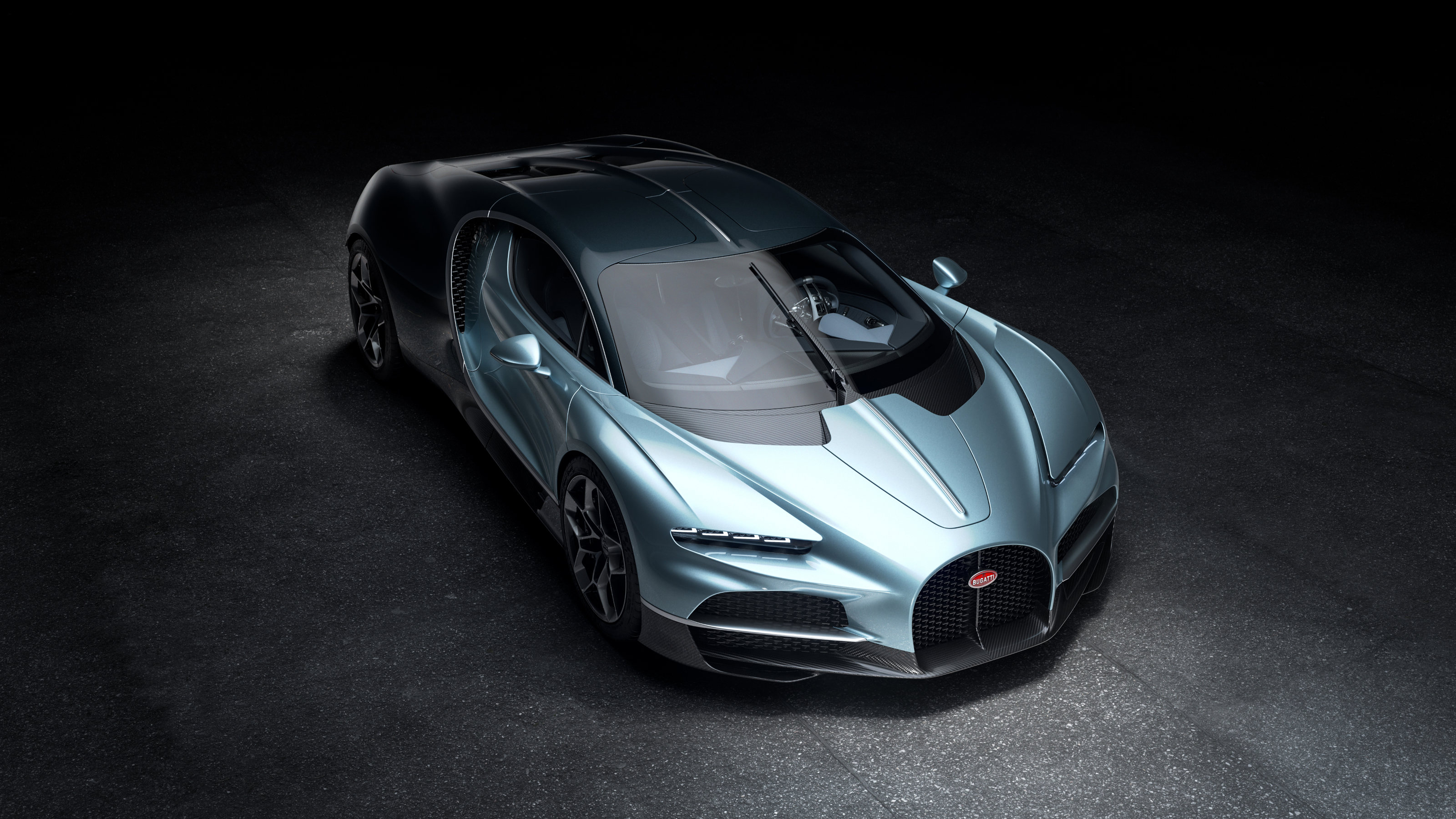
The new Bugatti Tourbillon
As the first all-new Bugatti since pioneering Croatian electric vehicle newcomer Rimac took control of the 115-year-old storied French marque in late 2021, the Tourbillon might logically have become an all-electric vehicle.
But 36-year-old owner Mate Rimac thought differently, as he declared on the hypercar’s world premiere at its elegant Molsheim, France HQ in late June 2024: ‘The obvious thing would have been to re-skin a Rimac Nevera, but Bugatti doesn’t do obvious.’ Rimac recently launched his newest side project, the Verne autonomous vehicle project, which might just have sated his love of EVs.
Bugatti Tourbillon: a hypercar designed to endure
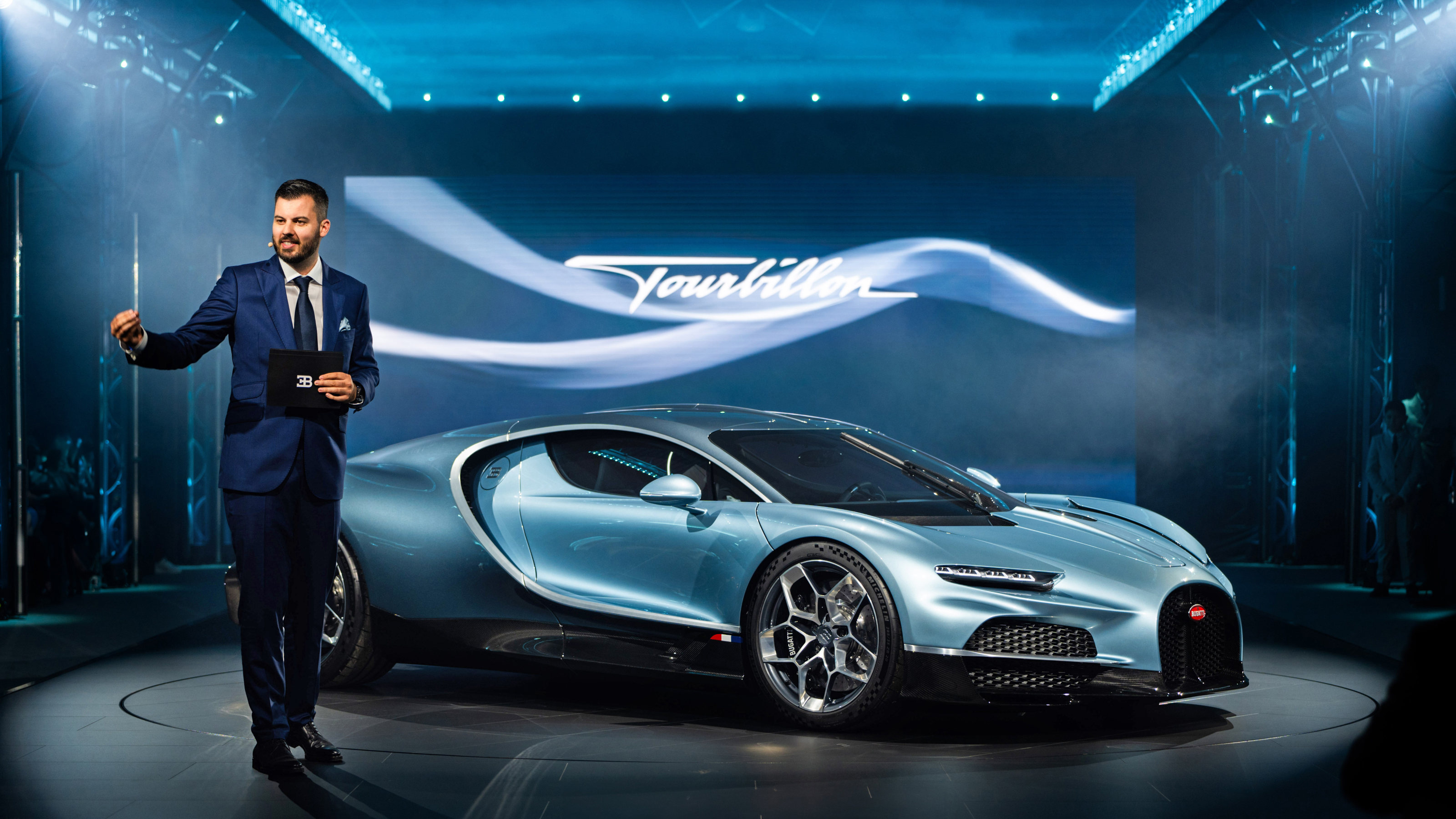
Mate Rimac with the new Bugatti Tourbillon
Instead, for Bugatti, Rimac decided to tap into the emotions he knows so many high-end car aficionados have for the mechanical look, feel, function and sound of a naturally aspirated internal combustion engine – and just add a little electric assistance and modern design and manufacturing ‘know-how’.
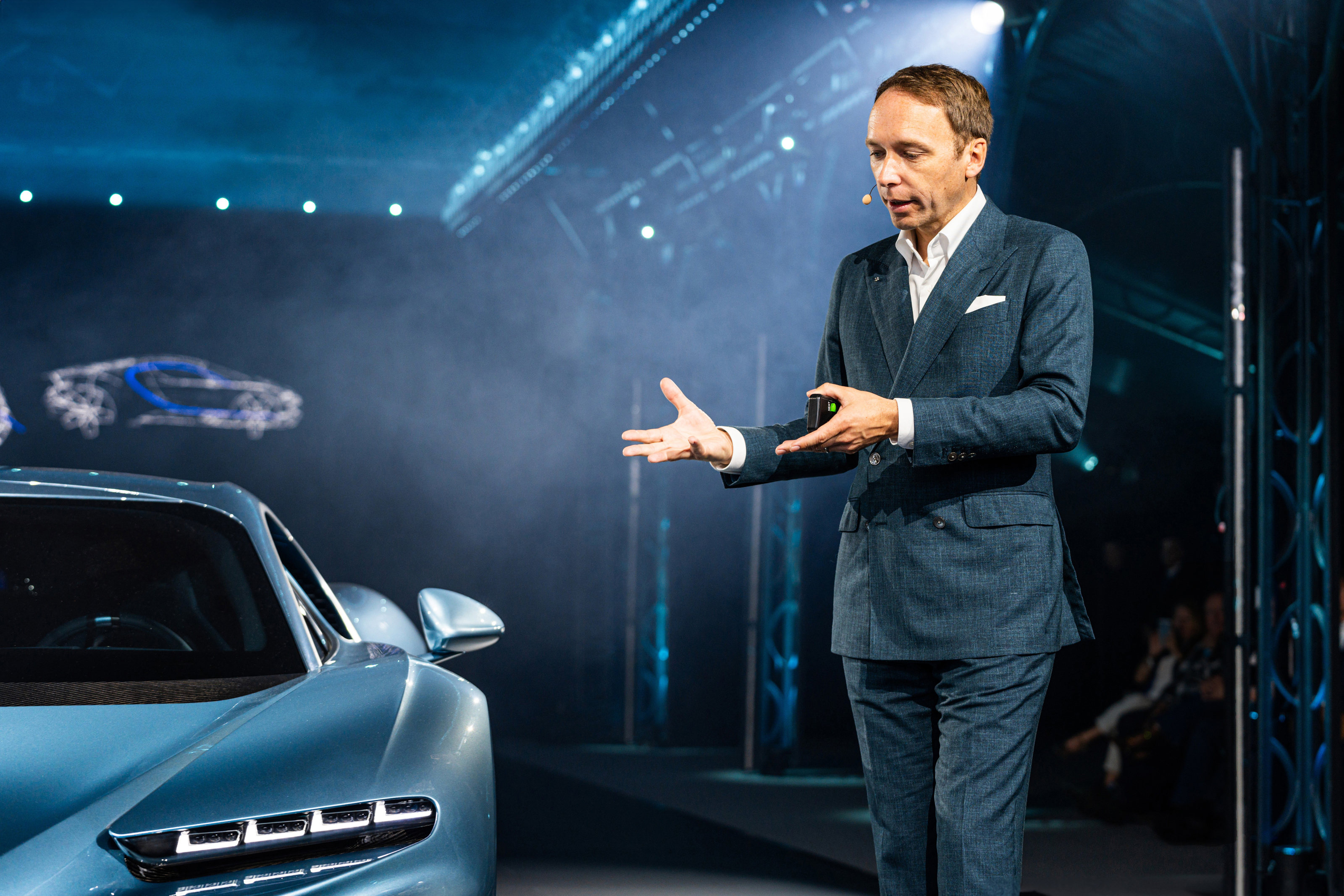
Frank Heyl with the new Bugatti Tourbillon
The result is a Cosworth-developed 1000hp 8.3-litre V16 petrol engine that nestles behind the two seats of the Tourbillon, and which can be viewed in all its glory through the rear window. In addition to those 16 cylinders, the engine has three electric motors for company, two at the front and one at the rear, adding another 800hp to collectively contribute to a 1800hp total.
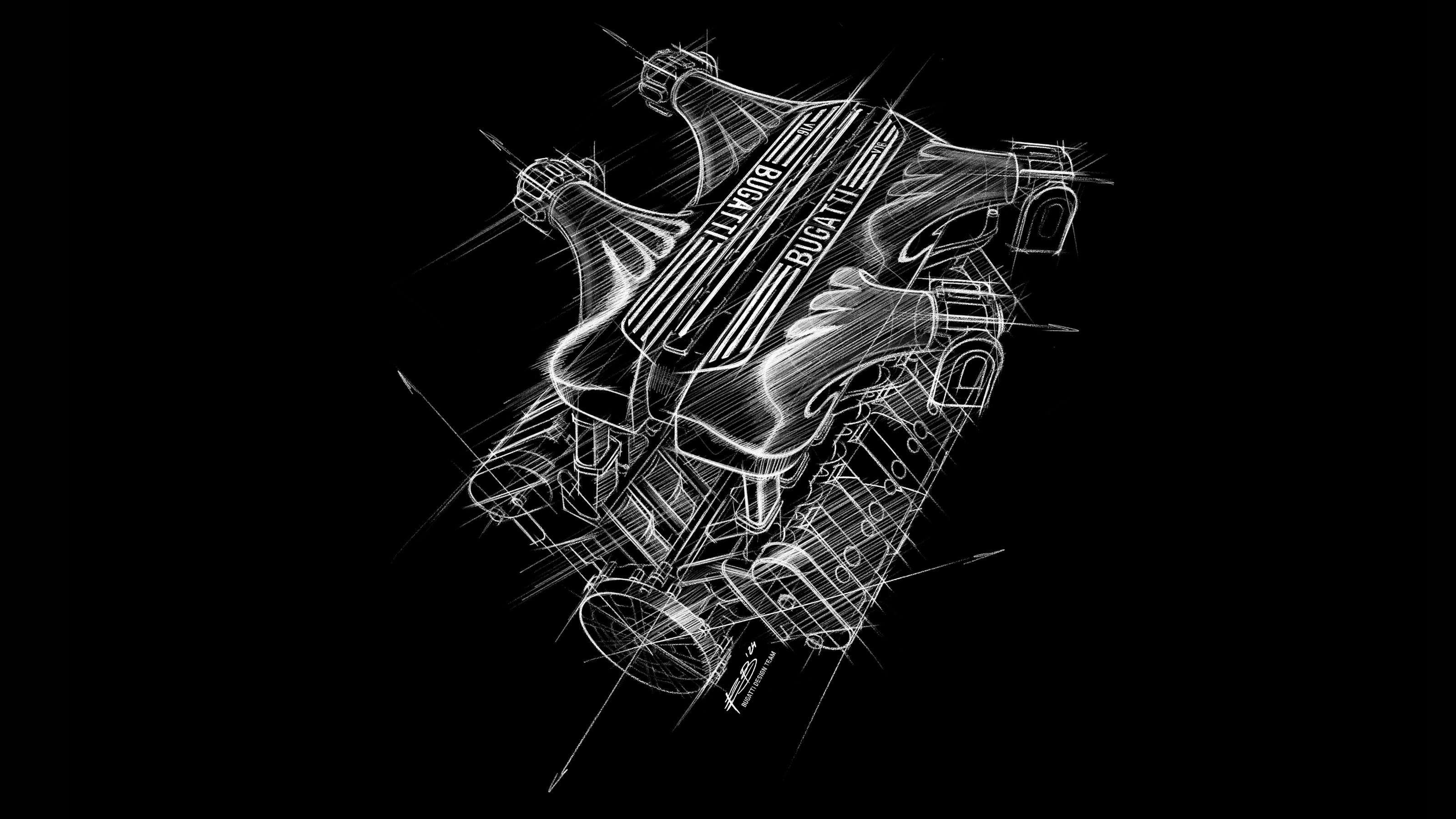
Presentation sketch of Bugatti's new V16 engine
Bugatti reckons this’ll catapult the Tourbillon from 0-62mph in 2.0 seconds. The Tourbillon also has a 25kWh battery which, if desired, allows the car to cruise emission-free under electric-only power for 37 miles, but despite that extra tech, remarkably Bugatti’s engineers have managed to make the car a touch lighter than its non-hybrid Chiron predecessor.
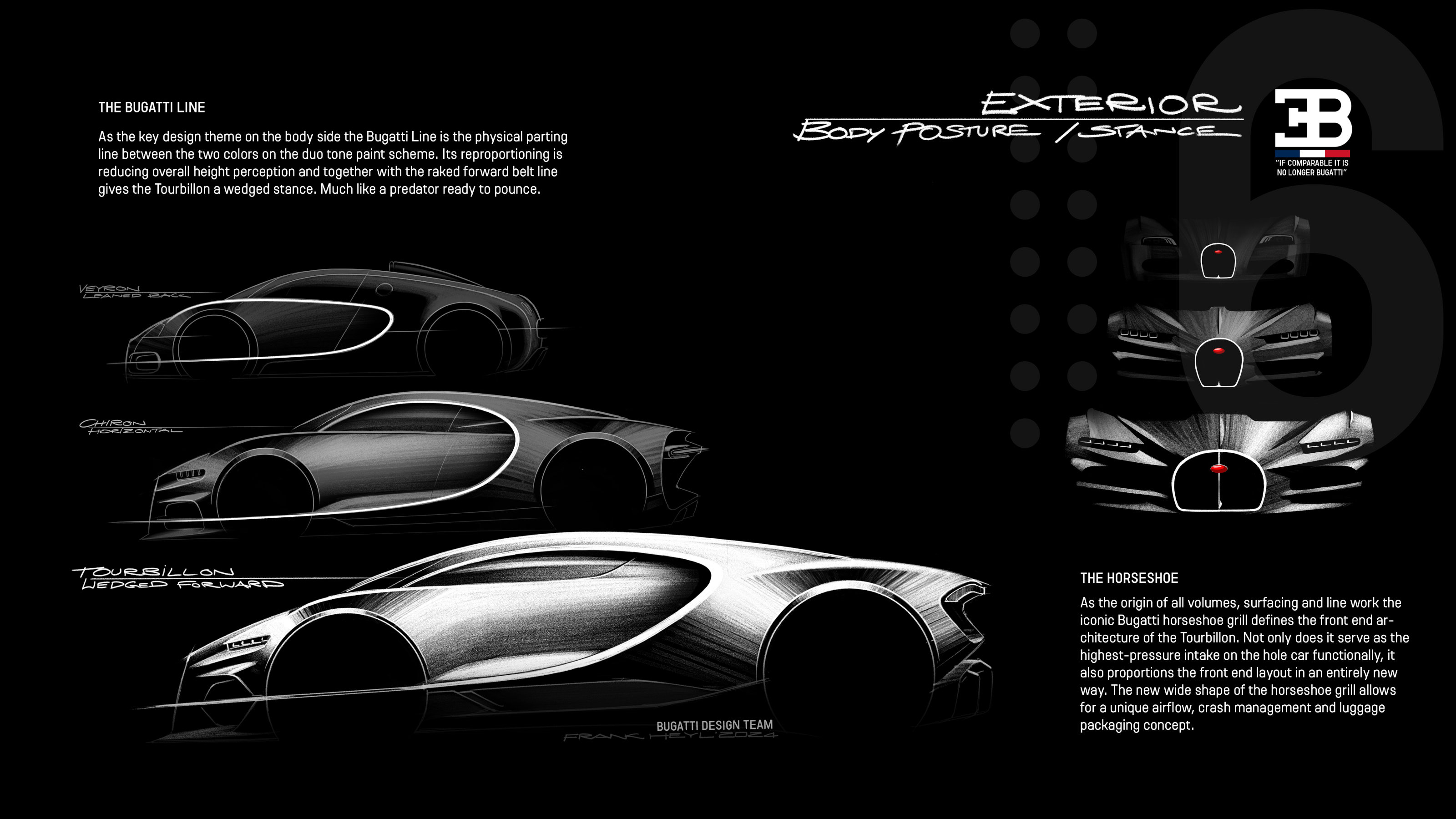
The genealogy of the Bugatti Tourbillon
The elegant Chiron was a tough act to follow, so the Tourbillon’s designers didn’t stray too far from the successful visual formula. Mate Rimac admitted the exterior design was an evolution rather than a revolution, but there are some key differences in the new model, from the wider interpretation of its famous horseshoe-shaped front grille, to a more pulled-forward, complex frontal area and a newly patented, knee-high carbon fibre rear diffuser, to help the 277mph-capable car stay grounded at high speeds.
Receive our daily digest of inspiration, escapism and design stories from around the world direct to your inbox.
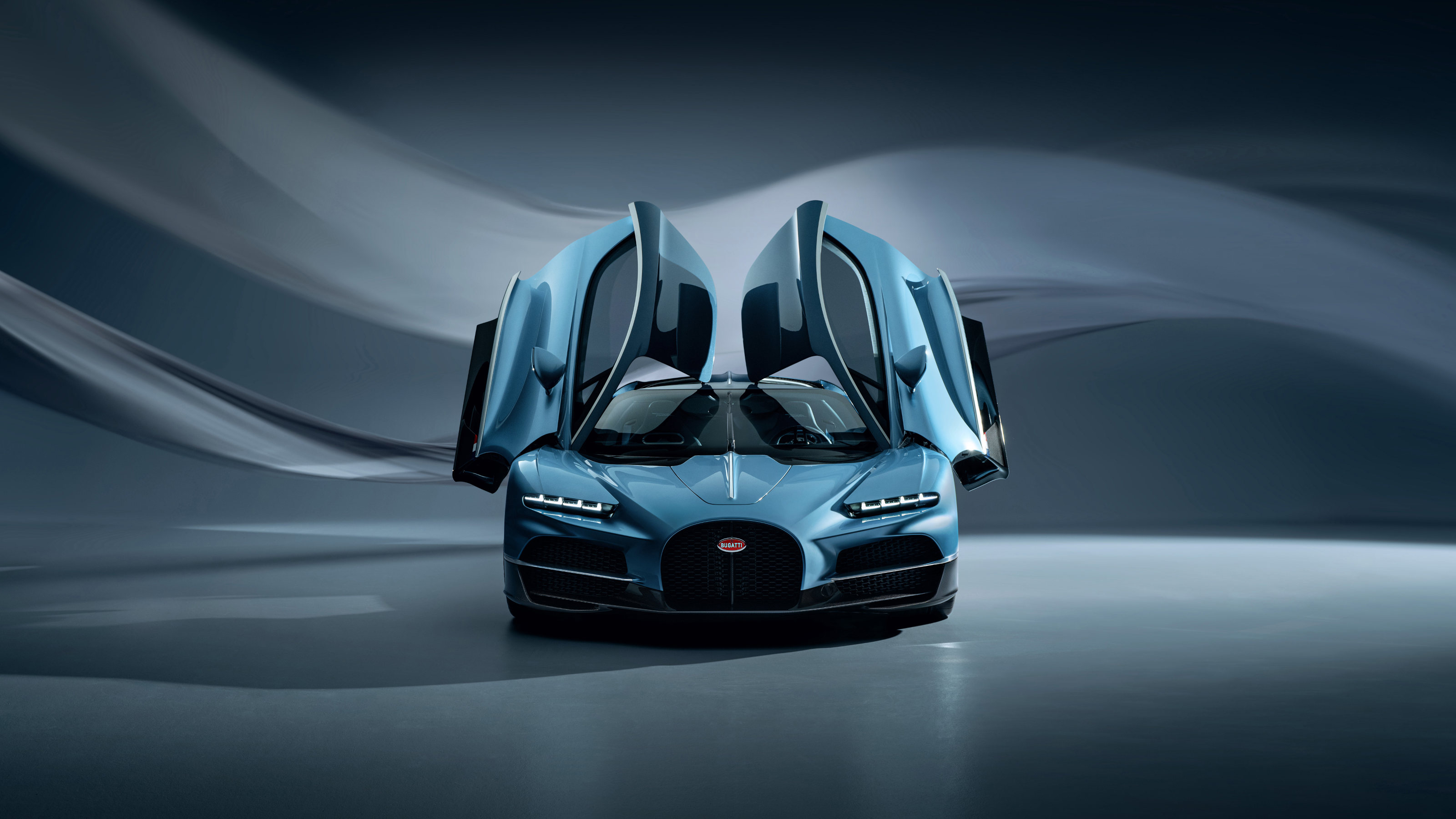
Bugatti Tourbillon
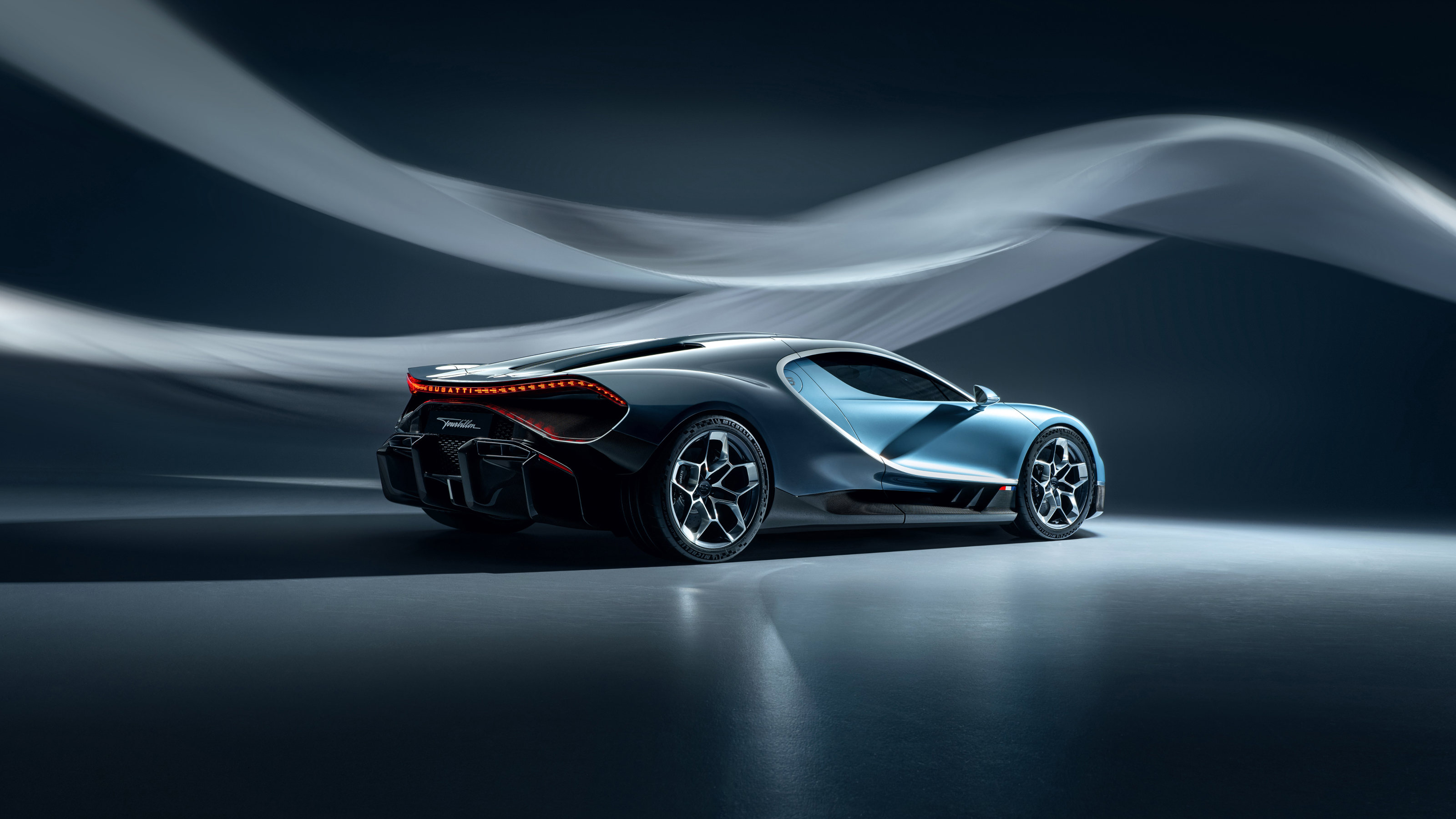
Bugatti Tourbillon
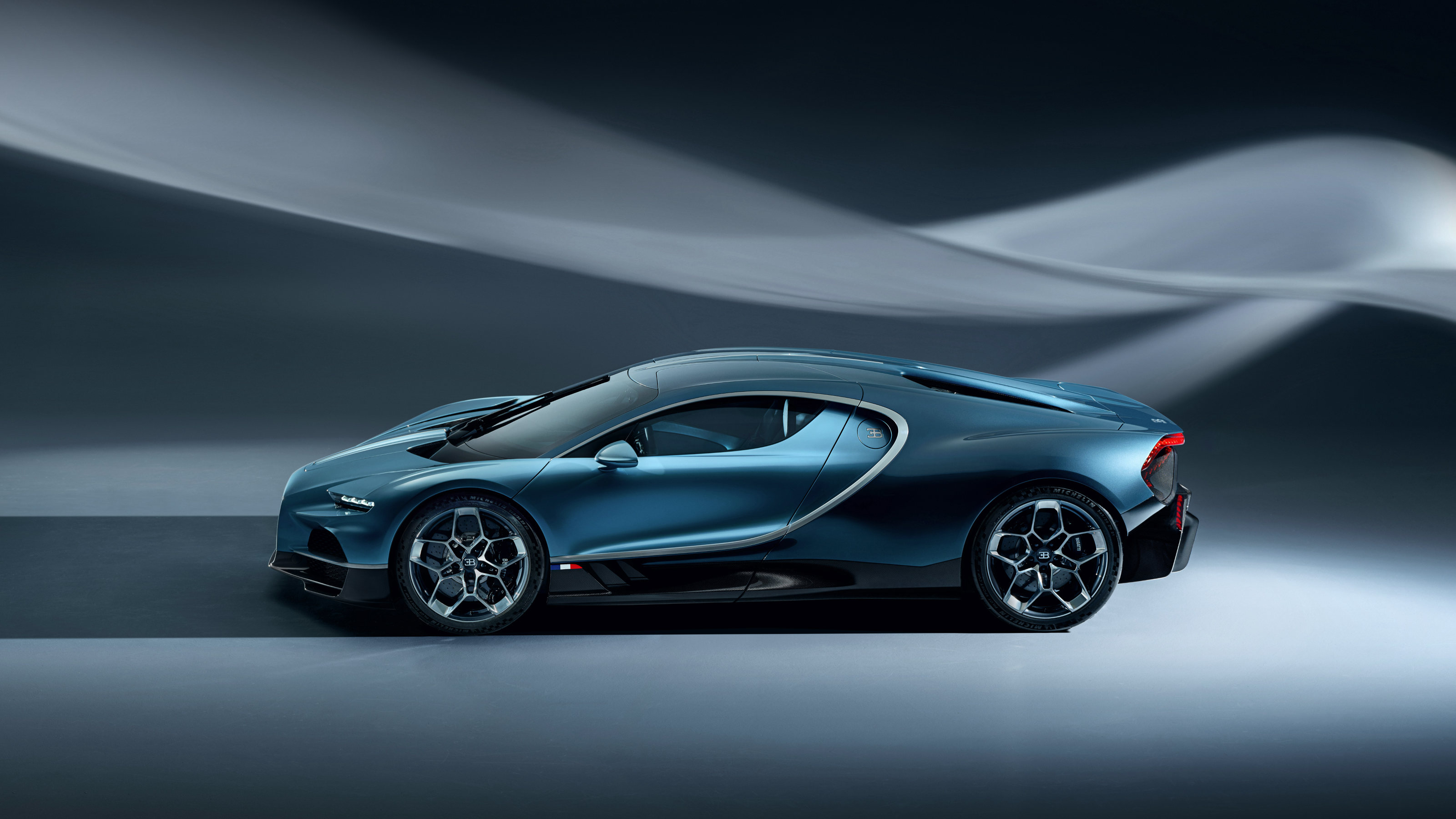
Bugatti Tourbillon
The interior design sees perhaps an even bigger leap. The cabin’s centrepiece, situated right in front of the driver, is a cluster of intricate analogue dials within transparent cases displaying speed, revs and more. Clearly inspired by high-end skeletal-style horology, the prominence of these dials explains the ‘Tourbillon’ name – a reference to the balancing technology used by luxury mechanical watchmakers to improve accuracy regardless of the angle of the mechanism.
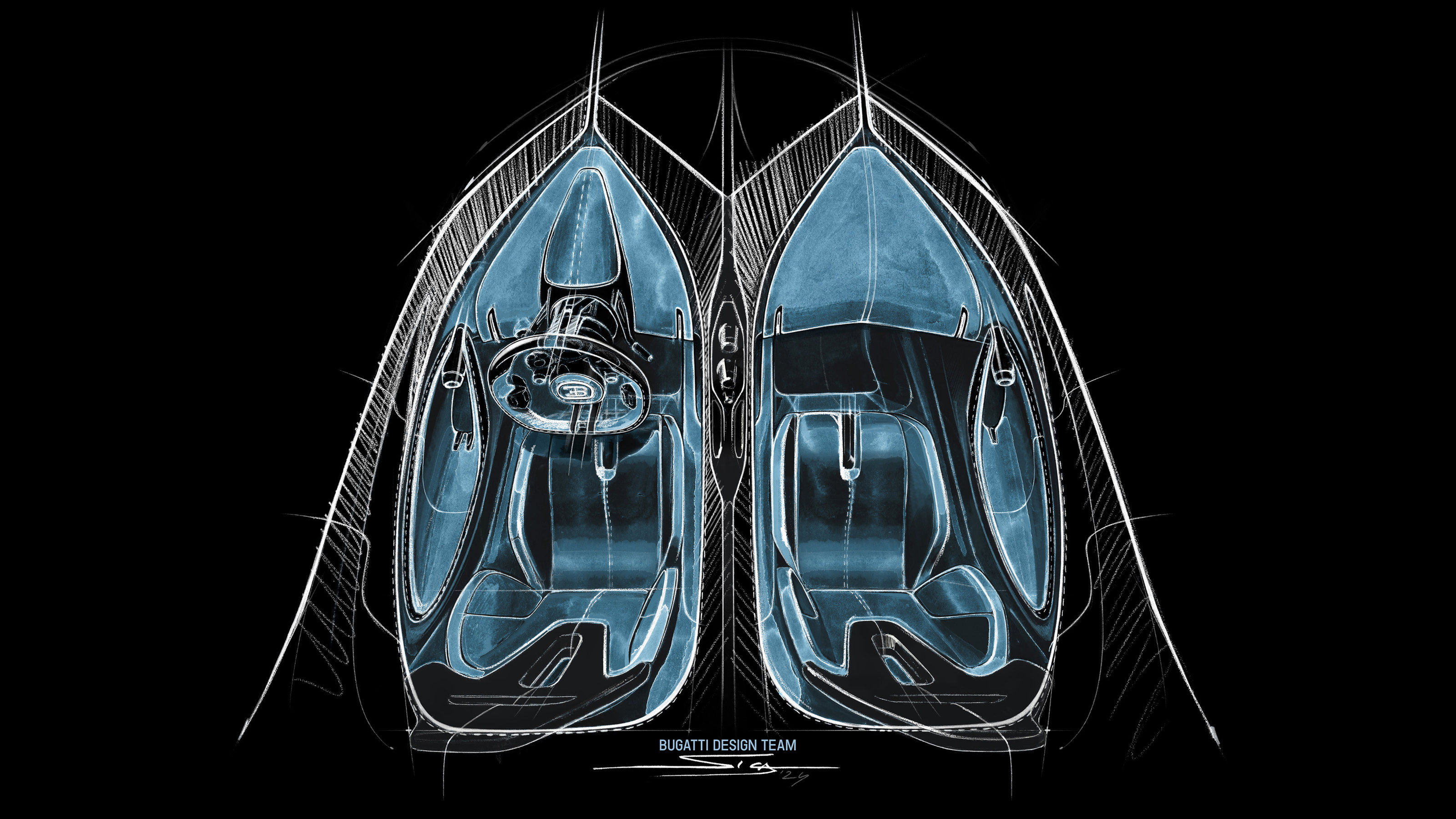
Bugatti Tourbillon interior sketch
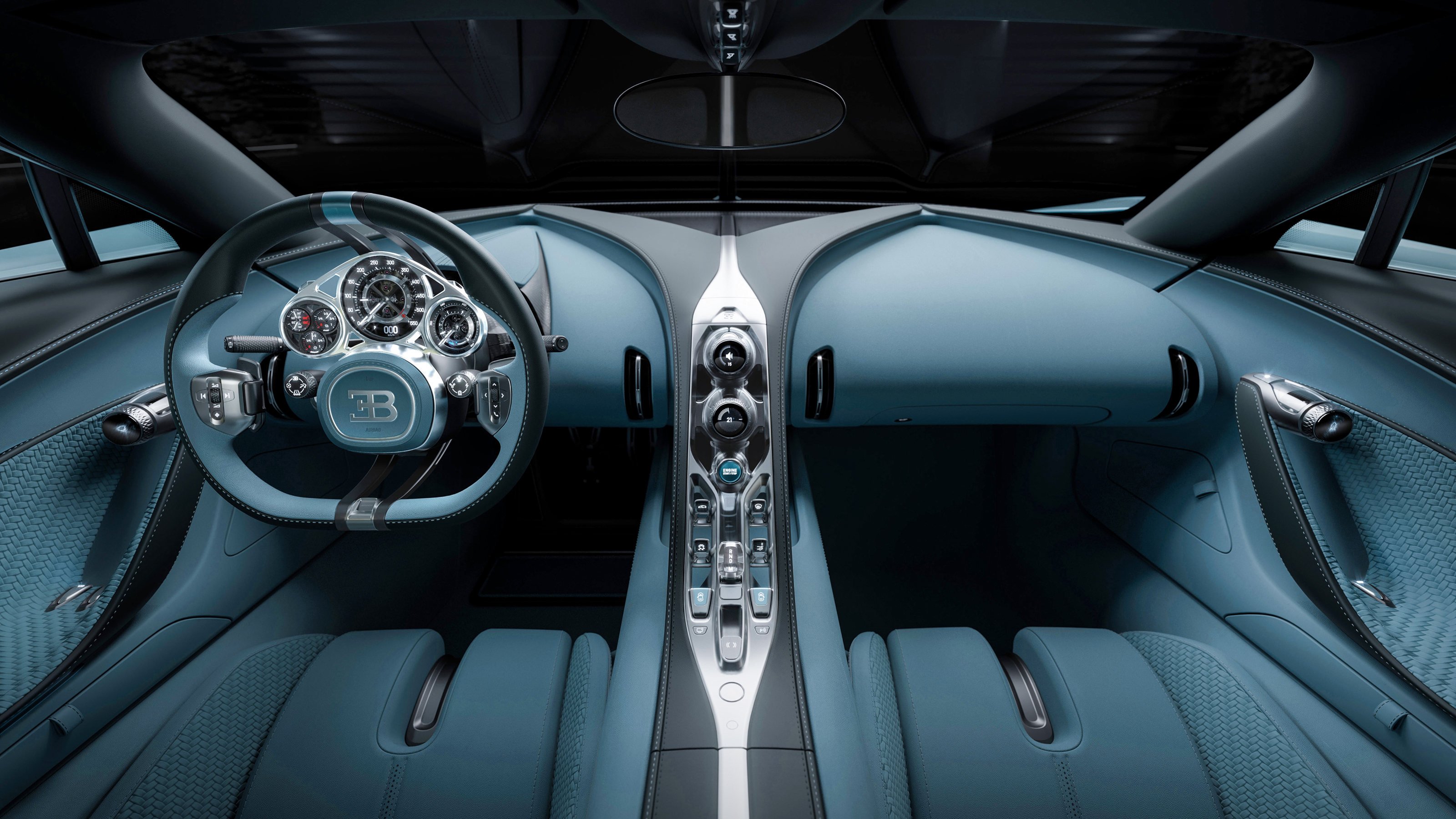
Bugatti Tourbillon finished interior
Viewed up close – even from the back – this feature is incredibly detailed, beautifully finished and, unlike so many luxury see-through wristwatches, functional and sophisticated too. There is a token screen in the car – so customers can link an Apple phone and mirror-screen CarPlay, or view a reversing camera to aid parking – but it only deploys from the top of the centre console when the driver requests it.
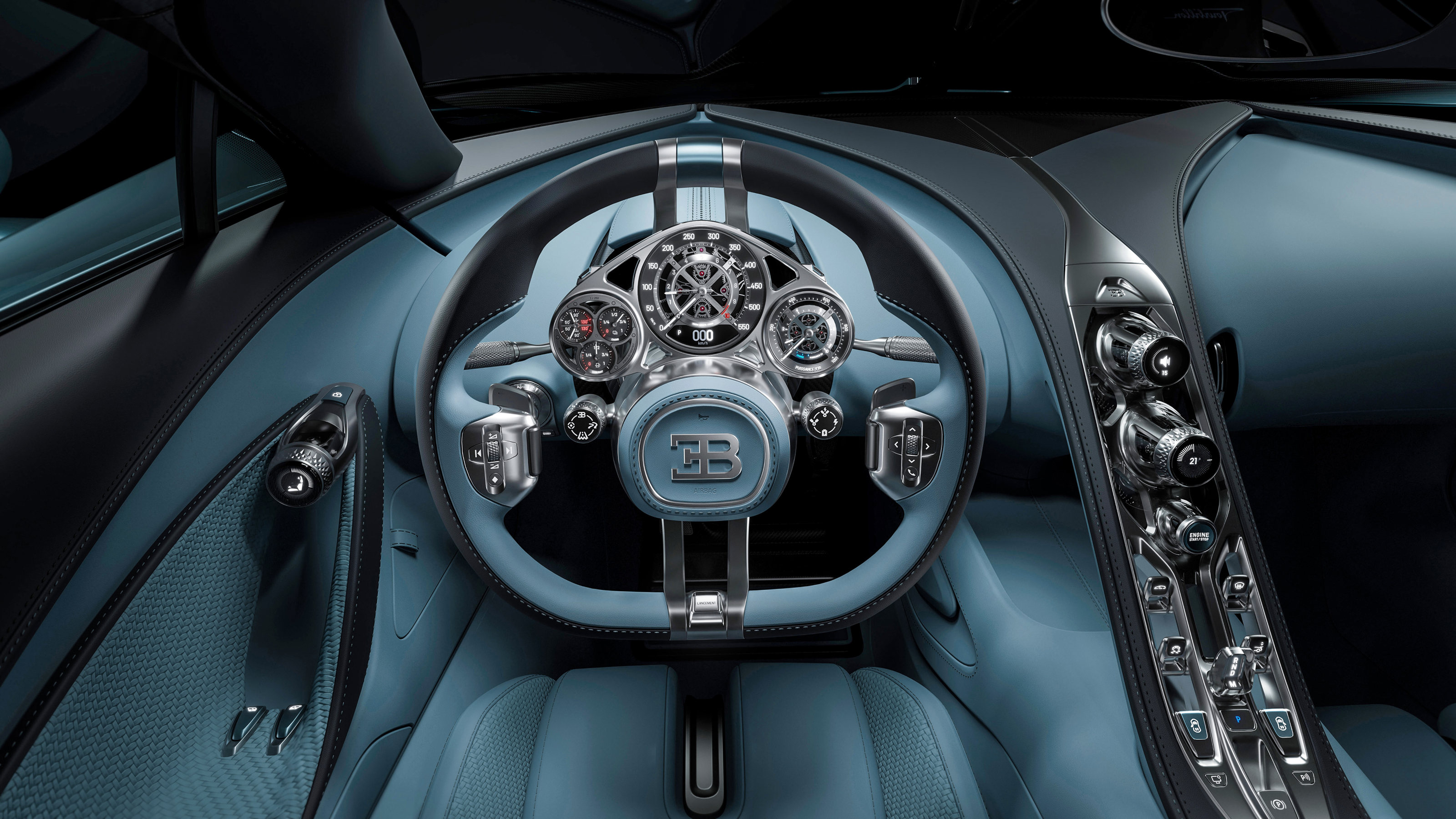
Bugatti Tourbillon dashboard
Otherwise, this reminder of the (sometimes unsightly) modern motoring world remains out of sight, so as not to sully the timeless interior vista. Alongside intricately knurled indicator stalks and tightly woven sections within the interior door panels and seat side bolsters –recalling respectively, precision instruments and luxury handbags – the overall effect is breathtaking. While such incredible attention to detail is not ‘needed’, there is no doubt the result is ‘wanted’.
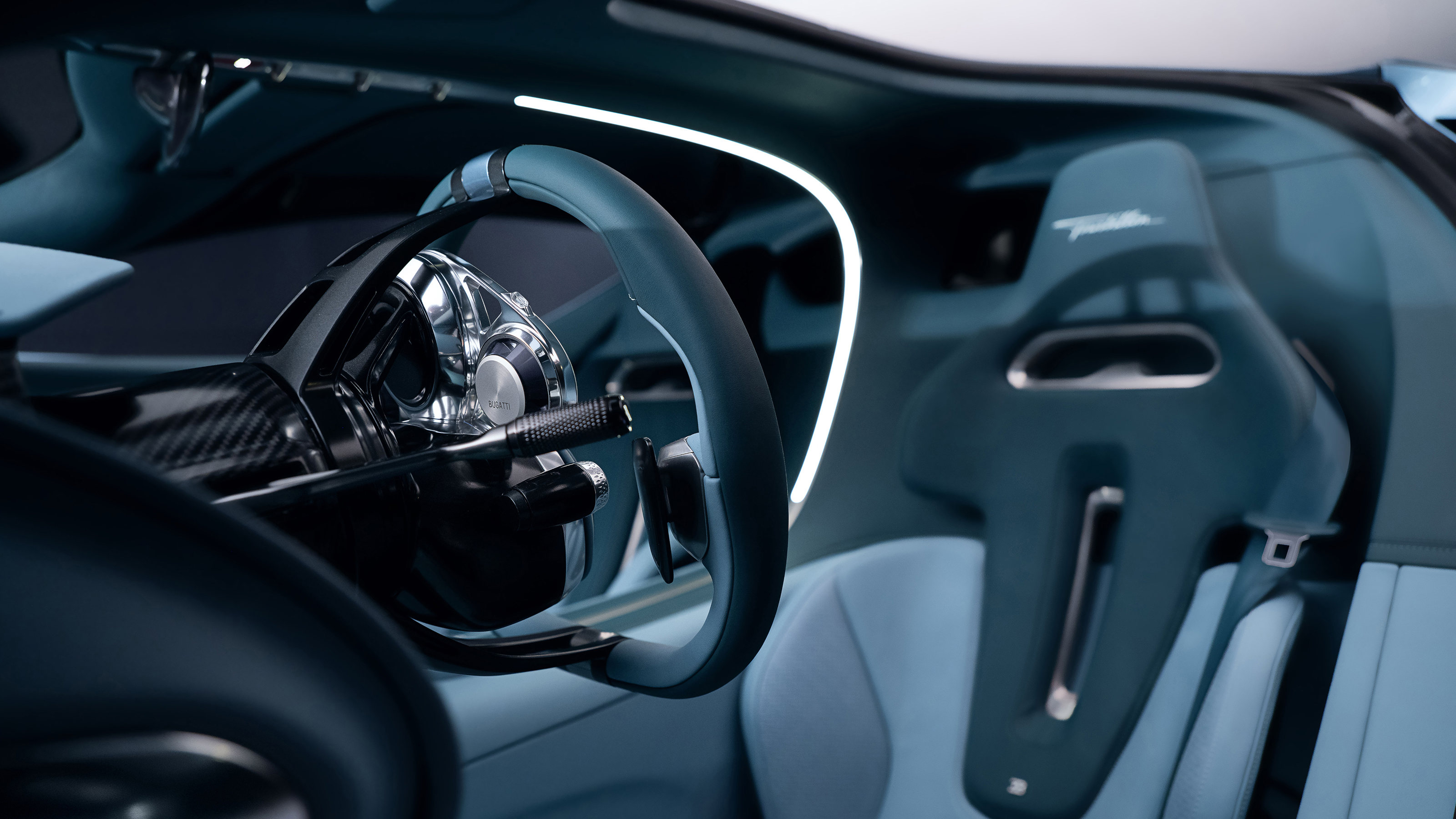
Bugatti Tourbillon interior
Attending the world premiere among the glittery global crowd of existing Bugatti customers, the reaction was overwhelmingly positive. On that evidence, the wonderfully well resurrected marque should have no trouble selling its limited 250-unit production run. First deliveries are due in 2026 but you can expect most Tourbillons to still be around a century later.
Guy Bird is a London-based writer, editor and consultant specialising in cars and car design, but also covers aviation, architecture, street art, sneakers and music. His journalistic experience spans more than 25 years in the UK and global industry. See more at www.guybird.com
-
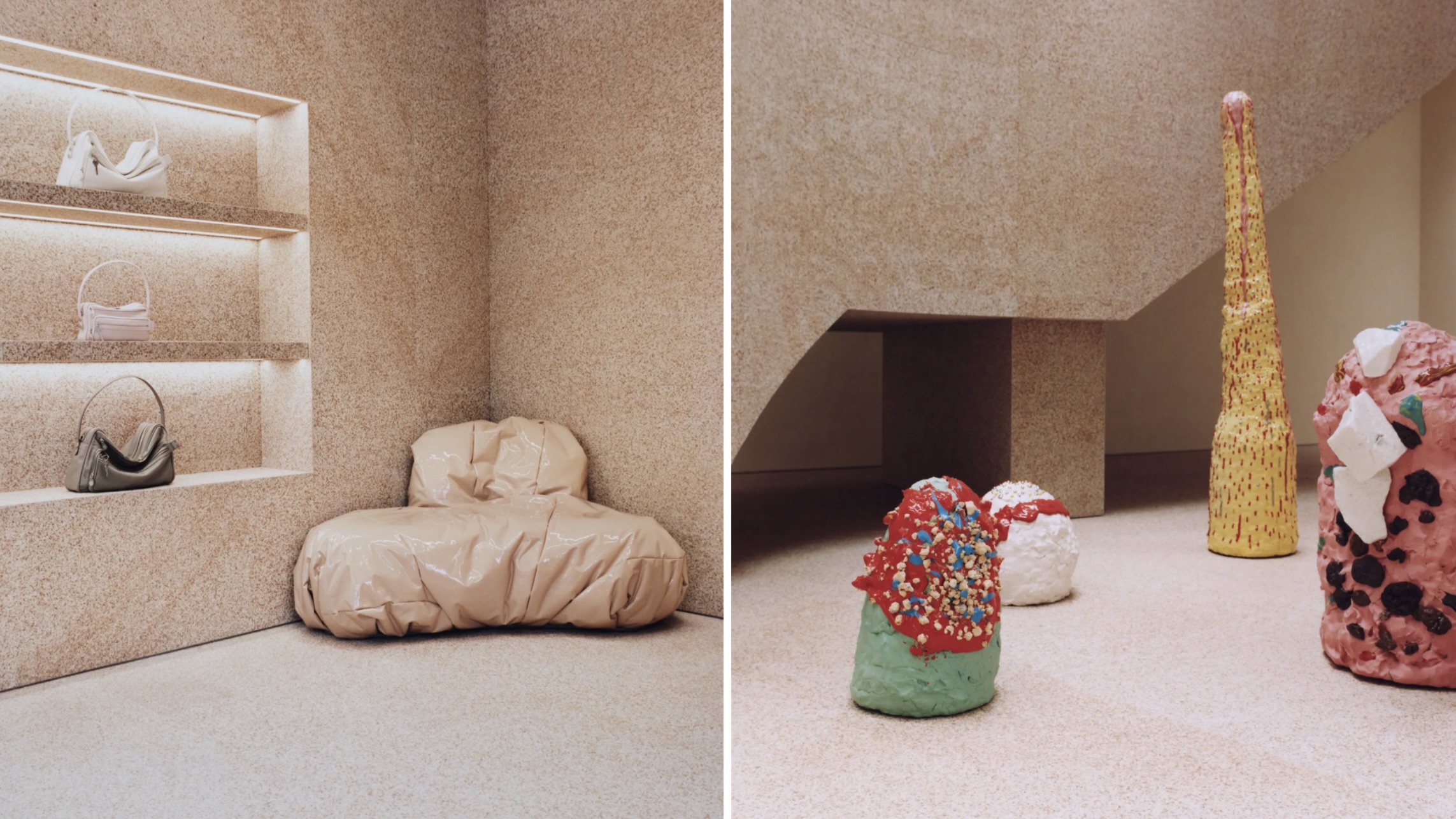 In 2025, fashion retail had a renaissance. Here’s our favourite store designs of the year
In 2025, fashion retail had a renaissance. Here’s our favourite store designs of the year2025 was the year that fashion stores ceased to be just about fashion. Through a series of meticulously designed – and innovative – boutiques, brands invited customers to immerse themselves in their aesthetic worlds. Here are some of the best
-
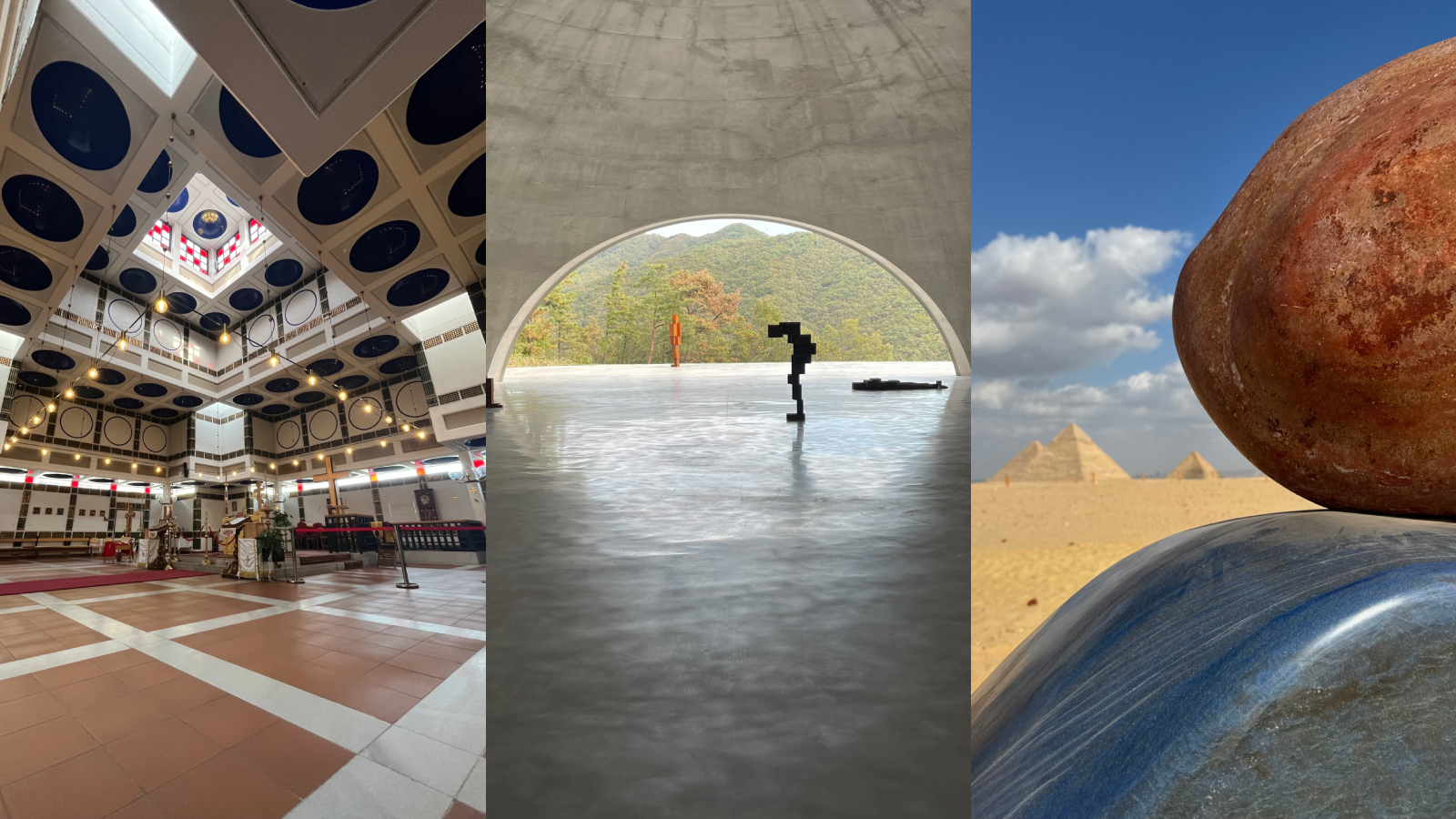 The Wallpaper* team’s travel highlights of the year
The Wallpaper* team’s travel highlights of the yearA year of travel distilled. Discover the destinations that inspired our editors on and off assignment
-
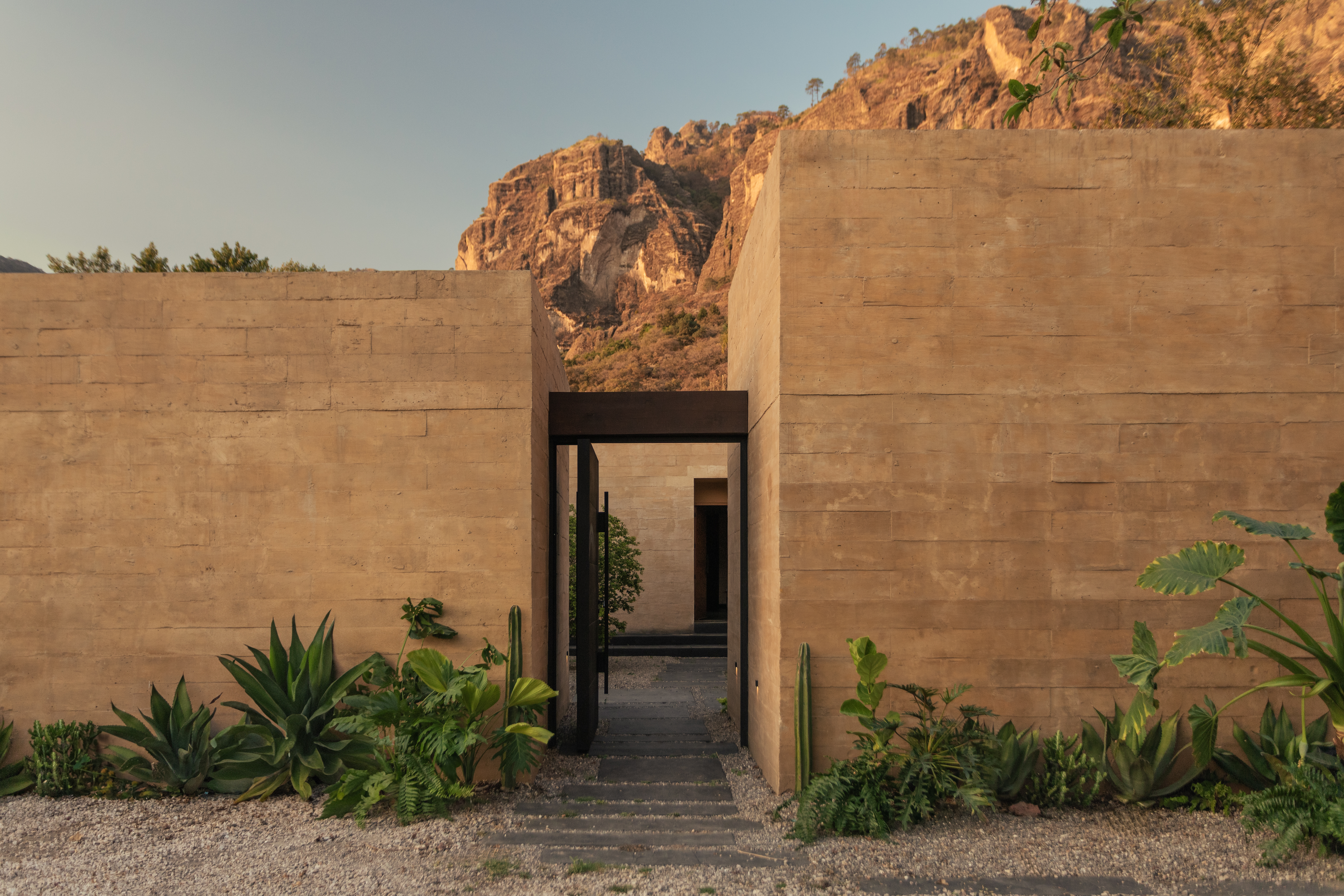 The architecture of Mexico's RA! draws on cinematic qualities and emotion
The architecture of Mexico's RA! draws on cinematic qualities and emotionRA! was founded by Cristóbal Ramírez de Aguilar, Pedro Ramírez de Aguilar and Santiago Sierra, as a multifaceted architecture practice in Mexico City, mixing a cross-disciplinary approach and a constant exchange of ideas